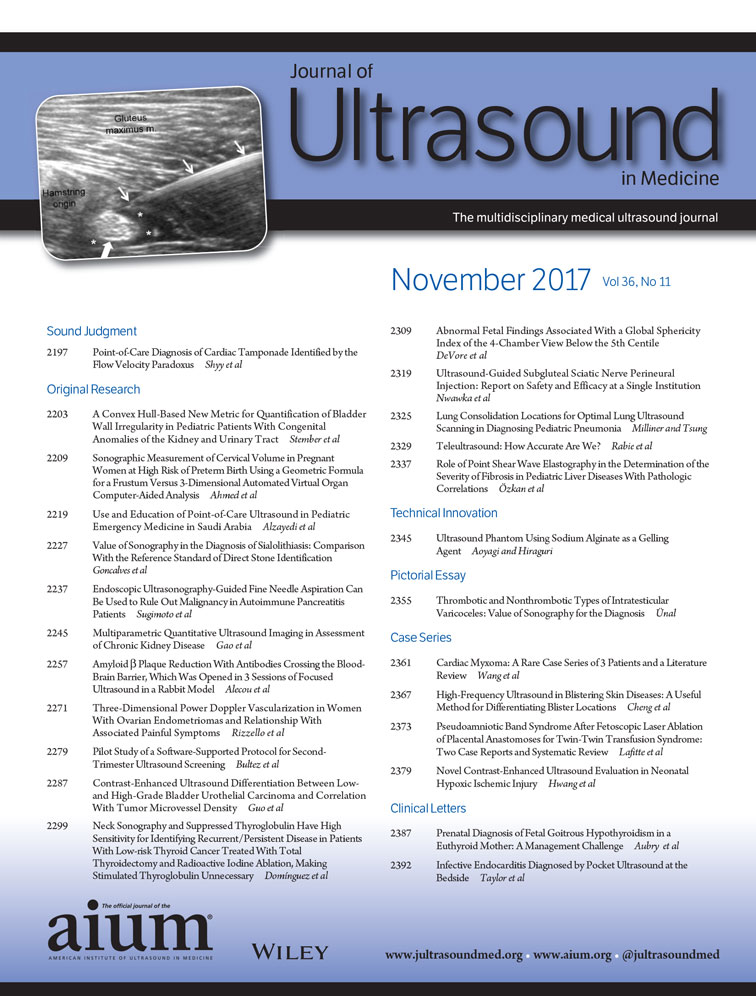Amyloid β Plaque Reduction With Antibodies Crossing the Blood-Brain Barrier, Which Was Opened in 3 Sessions of Focused Ultrasound in a Rabbit Model
Abstract
Objectives
The main objective of this study was to remove amyloid β plaques by applying multiple sessions of focused ultrasound (US)-induced blood-brain barrier (BBB) opening using microbubbles with and without delivery of antibodies in a rabbit model.
Methods
The animal model was achieved by feeding a high-cholesterol diet to rabbits for 4 months. Fifty-two New Zealand White rabbits were divided into treatment groups: untreated control, high-cholesterol diet only, antibodies only, focused US only, and focused US and antibodies. Three sessions of focused US were administered to the treatment groups.
Results
It was shown that with this animal model, the plaques were 30 μm in diameter. By increasing the number of sessions, the number of plaques decreased (both for focused US only and focused US and antibodies). Without the application of focused US, the average number of plaques dropped from 200/cm2 (before treatment) to 170/cm2 (after treatment). The effect of treatment with focused US with antibodies was more drastic. With 3 BBB opening sessions, the average number of plaques was reduced from 200 to 78/cm2.
Conclusions
This feasibility study had demonstrated that by opening the BBB, it will be possible to deliver exogenous antibodies to the brain, thus eliminating amyloid β plaques. More importantly with repeated opening of the BBB (3 times in this study), the reduction in the number of plaques was increased.




